

Ben Zachariah
Video: Off-road battle for Beer O’Clock Hill has automakers scrambling
3 Hours Ago

Contributor
Maserati is one of the most storied Italian brands, with a history of producing stunning cars that nevertheless fail to live up to the potential of the hallowed trident brand.
Under the stewardship of FCA (Fiat Chrysler Automobiles), the Maserati marque arguably suffered from the latter. With FCA itself struggling financially, Maserati was endowed with a parsimonious level of funding.
The range revolved around older models, including the GranTurismo coupe and Quattroporte and Ghibli sedans, as well as the slightly newer Levante SUV that tried to compete with everything from the Porsche Cayenne to the Jaguar F-Pace.
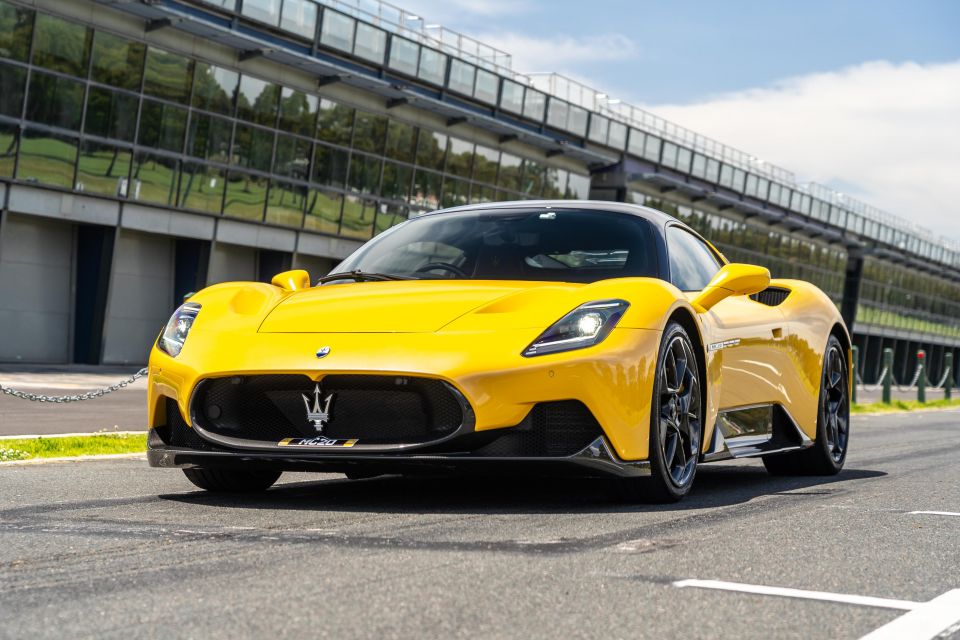
With FCA also controlling Alfa Romeo and Ferrari, Maserati found itself sandwiched in an awkward middle spot.
Unable to compete directly with the Prancing Horse brand and with FCA CEO Sergio Marchionne attempting (and failing) to revitalise Alfa Romeo as a direct competitor to the German triumvirate of Audi, BMW and Mercedes, the Trident marque found itself sidelined.
Thankfully, under current Stellantis ownership, CEO Carlos Tavares has committed to revitalising the Maserati brand, and the MC20, alongside the Grecale SUV, are the first fruits of this commitment.
MORE: Maserati is flying, and we should all be thankful MORE: 2022 Maserati MC20 review, first drive
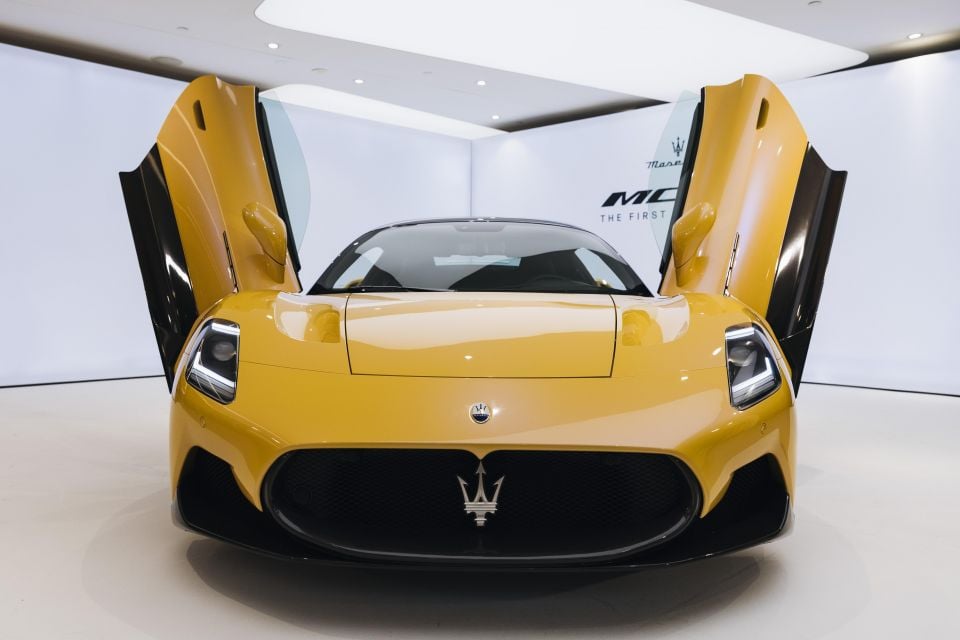
With Ferrari now independent, Maserati has been classified as the sole Stellantis ‘luxury’ brand, positioned above its ‘premium’ Alfa Romeo, DS and Lancia brands, and given the breathing room and resources to re-establish itself as a bona-fide Porsche competitor.
Naming-wise, the MC20 bears significance as a spiritual successor to the MC12, and ushers a return of the brand to the dedicated sports car segment, without having to do double duty as a GT car (a task that will be handled by an all new GranTurismo).
Mechanically, it also marks a new era for the brand in featuring the new ‘Nettuno’ (Neptune) V6 engine, Maserati’s first in-house engine in more than 20 years.

Many sports car manufacturers like to claim that the aesthetics of their design are the consequence of nothing but function, and Maserati is no different in contending that the MC20’s exterior is a pure sculpture – driven by aerodynamic considerations.
Head of Maserati design Klaus Busse says the design of the MC20 is a tale of two halves, with “the upper part of the MC20 representing the human touch, while the raw lower part is about the technology”.
Maserati is thereby combining Italian sculpture and high performance.
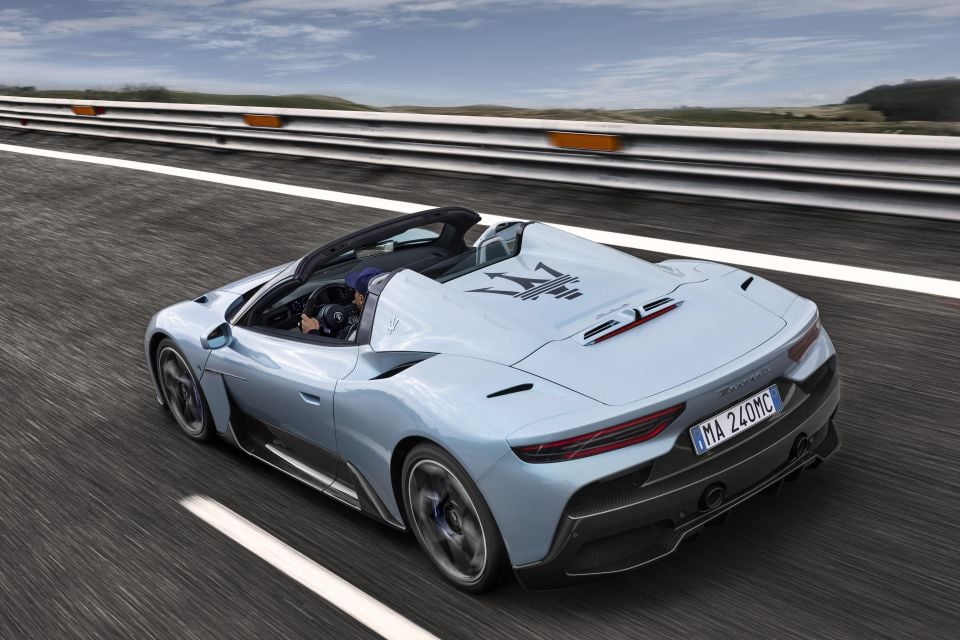
Rear mid-engined and featuring a carbon-fibre composite monocoque that accommodates the recently revealed open-top ‘Cielo’ variant – as well as an upcoming battery electric version of the MC20 – this approach to exterior design can perhaps best be evidenced by the restrained use of air vents and active aerodynamics features.
The MC20 does not feature deployable front or rear spoilers, nor oversized strakes or vents on the side profile of the car. Maserati claims that the absence of these features demonstrates the thoroughness of its wind tunnel testing, and preserves the integrity of the styling regardless of the speed at which the car is travelling, while also keeping weight to a minimum.
Maserati models have traditionally featured a front end composed of three distinct air intakes, with the front grille usually accompanied with smaller, distinct lower left and right air intakes.
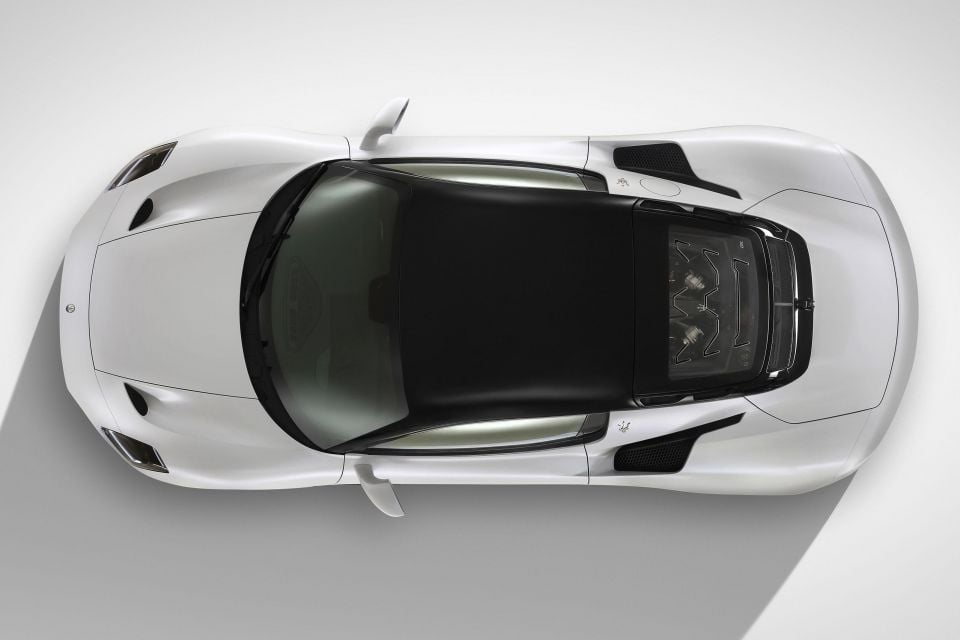
Due to the engine being positioned at the back of the car, this is unnecessary for the MC20, and so on the standard coupé, the rear windshield and air intakes combine to give off a subtle, abstract trident design when the car is viewed from a top-down perspective.
On the open-top Cielo (featuring a retractable glass roof), dual flying buttresses form a crucial aspect of the design instead, and so a decal is used to provide a more direct reference to the Maserati trident.
Importantly, the rigidity offered by the carbon-fibre monocoque and absence of extraneous vents also enabled the Trident brand to implement attention-grabbing butterfly doors in both the coupé and open-top Cielo variants of the MC20, for easier ingress and egress. Sensors fitted to each door ensure they do not collide with any surrounding obstacles.
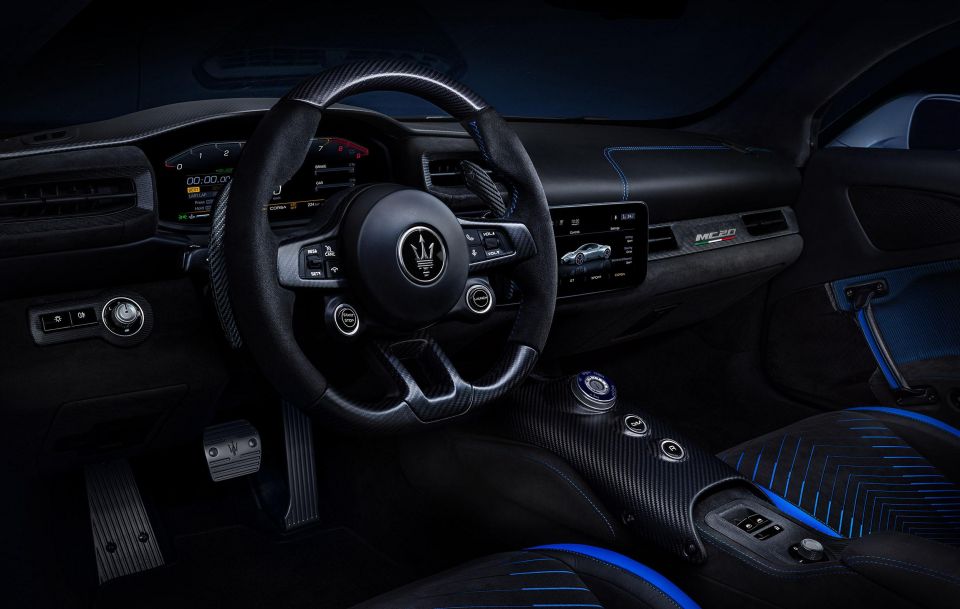
Arguably one of the true giveaways of the focus of a car is how sophisticated its interior is.
Luxury cars and those intended for grand touring purposes will generally feature an abundance of technology and a variety of different materials, often including wood, metal and fine leathers to ensure all passengers are comfortable.
Dedicated sporting cars, meanwhile, may use more austere, driver focused cabins with an absence of any extraneous screens, buttons or materials, with the focus being on providing the driver with the essentials they need to maximise vehicle performance.
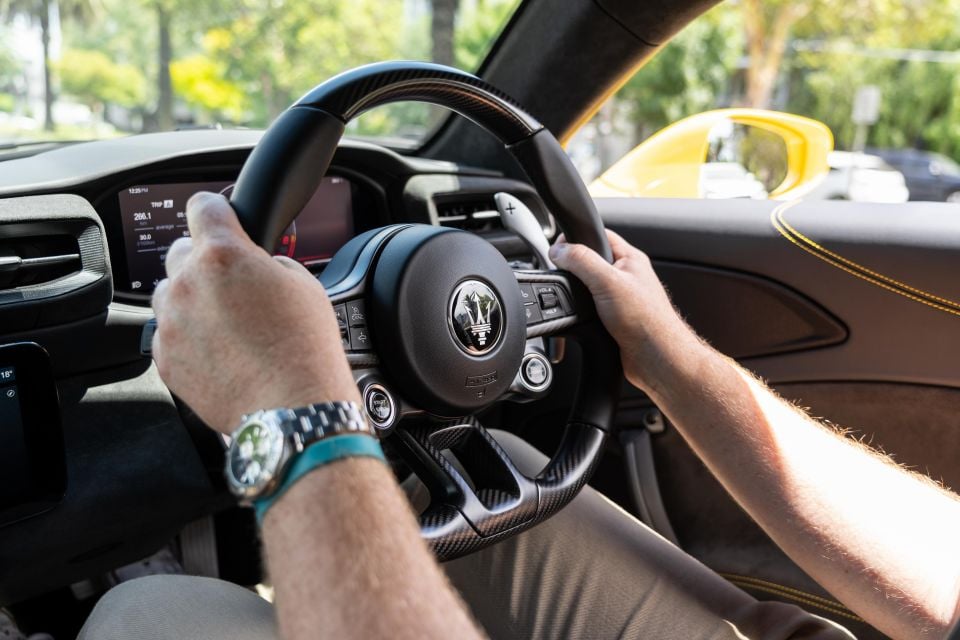
The MC20 clearly follows the latter approach. Despite its exclusive price tag, the steering wheel appears to be borrowed from (or is heavily inspired by) the Alfa Romeo Giulia, featuring almost identical aluminium paddle shifters that are fixed to the steering column, to make it easy for the driver to change gears regardless of steering wheel position.
Meanwhile, the infotainment system, whilst branded as the ‘Maserati Touch Control Plus’, is essentially identical to the Android Automotive based UConnect 5 system available overseas in the new Fiat 500 EV.
The overall dashboard and centre console design, whilst making use of premium materials such as Alcantara, carbon fibre and leather, remains simplistic in its overall architecture.
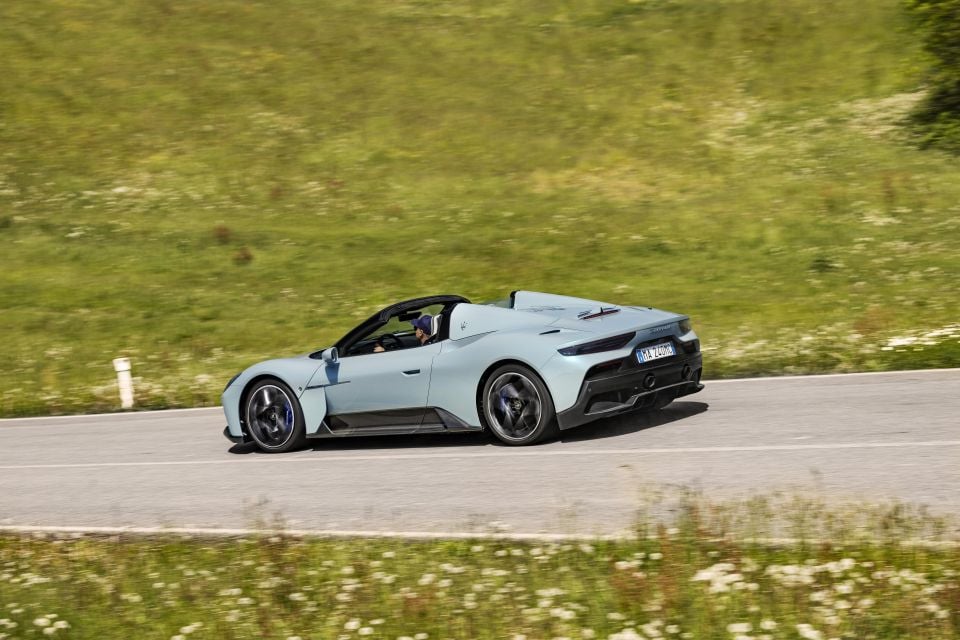
One of the most impressive technical details concerns the retractable glass roof of the MC20 Cielo.
The Trident brand claims that the Cielo is the only model in its class to feature a retractable glass roof that does not affect storage space, and just as importantly, is designed to open or close within 12 seconds at speeds of up to 50 km/h, in temperatures ranging from -30 to 85 degrees.
More impressively, it is the first-in-class to use Advanced Polymer-Dispersed Liquid Crystal (PDLC) technology. Appearing elsewhere on models such as the BMW iX, PDLC technology allows the driver to change the roof’s transparency in an instant, from clear to fully opaque to block out harsh sunlight, or to provide added privacy.
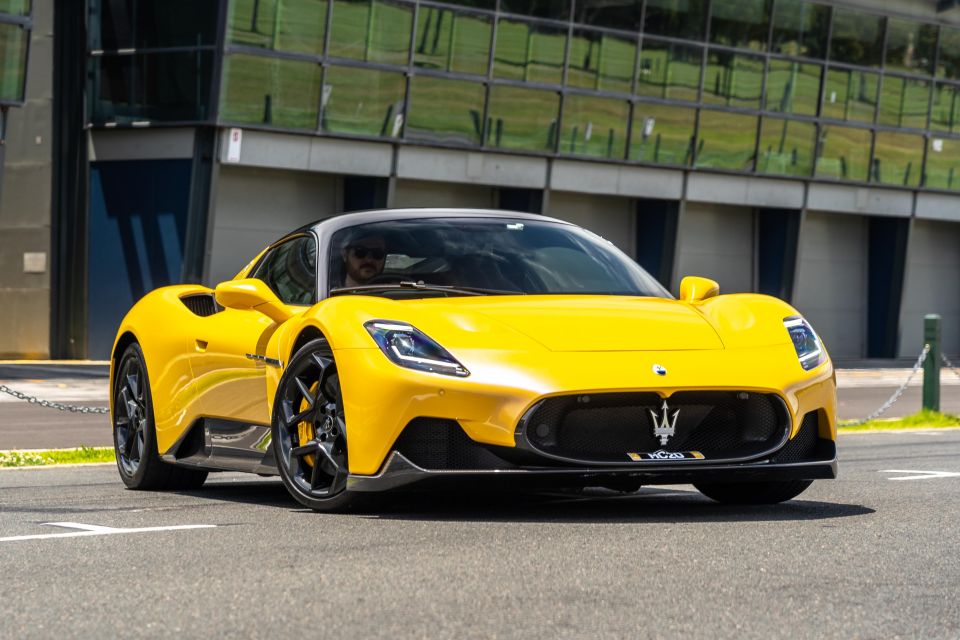


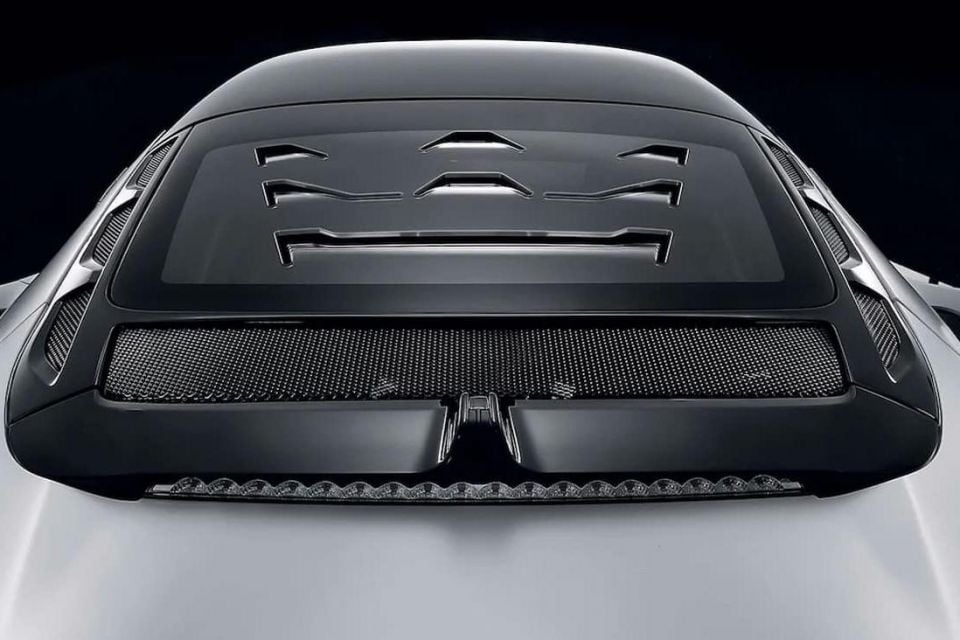
Dig these weekend design pieces? More can be found here:
MORE: Design Exposé – BMW 7 Series and i7 MORE: Design Exposé – Hyundai Ioniq 5 MORE: Design Exposé – Renault Mégane E-Tech Electric MORE: Design Exposé – Kia Sportage MORE: Design Exposé – Volkswagen Golf R MORE: Design Exposé – Porsche Carrera GT MORE: Design Exposé – Hyundai i20 N MORE: Design Exposé – BMW M4 (G82) MORE: Design Expośe – Mercedes-AMG GLE63 S
Where expert car reviews meet expert car buying – CarExpert gives you trusted advice, personalised service and real savings on your next new car.


Ben Zachariah
3 Hours Ago


CarExpert.com.au
11 Hours Ago


Damion Smy
1 Day Ago


Damion Smy
1 Day Ago


Damion Smy
1 Day Ago


Damion Smy
1 Day Ago